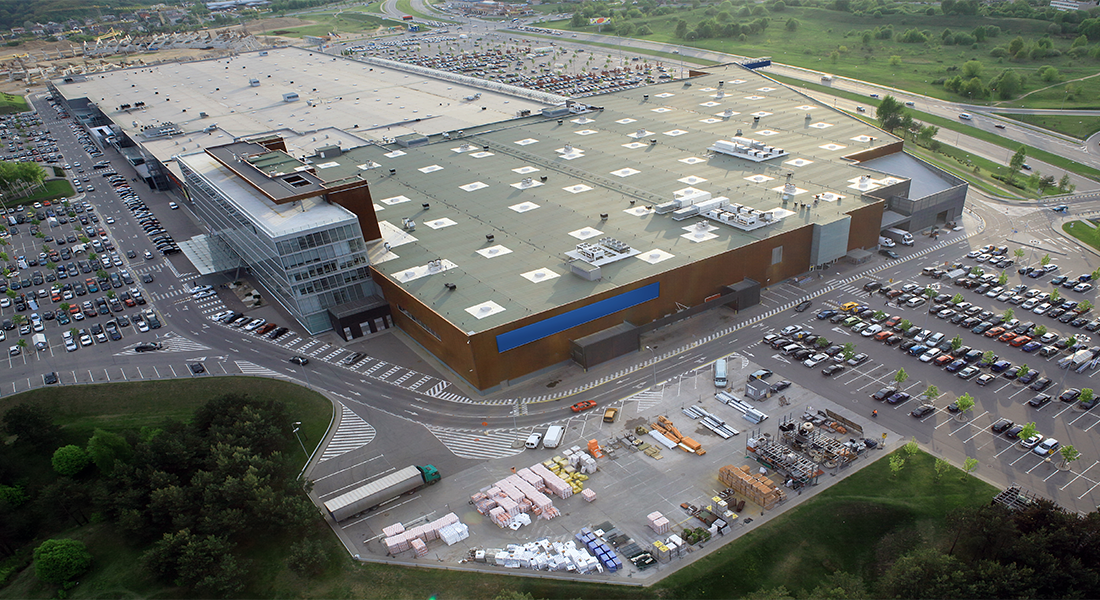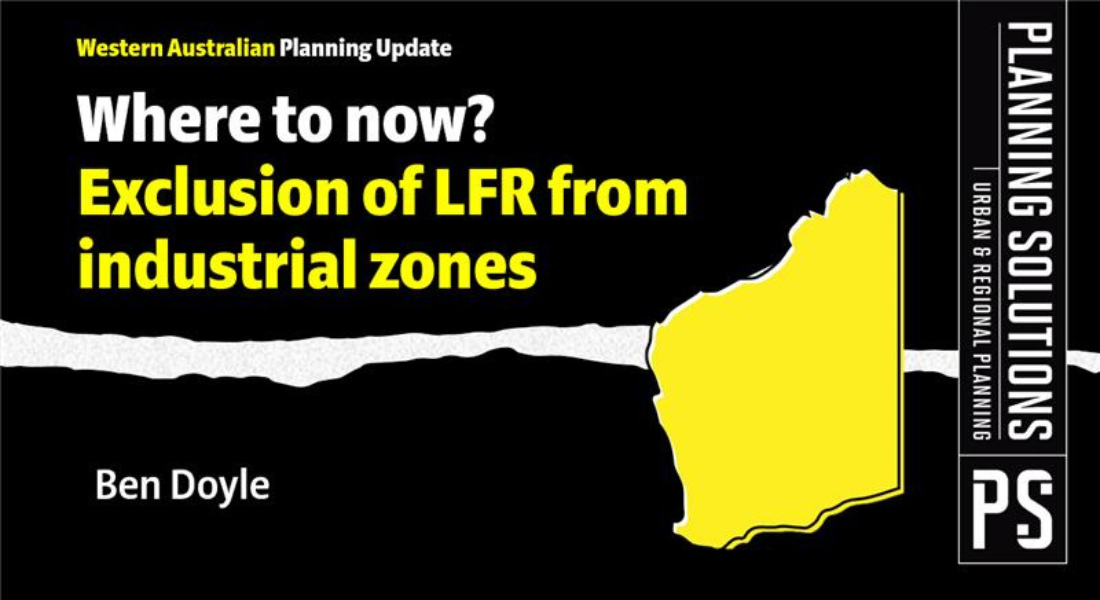Combustible Cladding and Large Format Retail Stores

- In recent times significant public attention has been given to the risk of fire arising from cladding that has been used in residential, public and commercial buildings throughout Australia. In particular, the media has focused on the November 2014 fire at the Lacrosse tower in Docklands and the subsequent Grenfell tower tragedy in London.The owners of Large Format Retail stores (LFRS) should not ignore these incidents and should take steps to understand the potential risk posed by combustible cladding and verify whether their existing LFRS contain any potentially non-compliant and unsafe combustible cladding. If any non-compliant cladding is identified, owners of LFRS should immediately seek expert advice on rectification works to ensure that the LFRS are safe for public use.What is combustible cladding?
‘Combustible cladding’ is a generic name used for certain materials – such as expanded polystyrene (EPS) or aluminium composite panels with a polyethylene core (ACPs) – used and affixed to buildings to provide an external skin or layer (typically for waterproofing and other purposes). These types of cladding were attractive for use by builders and owners because they are lightweight, effective insulators, sometimes aesthetically pleasing and were often significantly cheaper than traditional building materials.[1] However, such materials have a ‘high calorific value’ equivalent to petrol or diesel fuel. Put simply, these materials, when ignited, burn and cause the spread of fire, thereby putting property and lives at risk.
Combustible cladding, EPS and ACPs were typically used in Australia for cladding purposes in the period from approximately 1994 through to 2018.
The Lacrosse Decision
In a recent decision (which is subject to an appeal to the Supreme Court of Victoria) (the Lacrosse Decision), the Victorian Civil and Administrative Tribunal (VCAT) considered the liability of the parties involved with the design and selection of the ACP combustible cladding which was installed at the Lacrosse Building in Docklands.[2] In his decision Woodward J found that the use and selection of ACPs in the residential tower was not suitable and that the builder was liable to the owners for the loss and damage caused. The builder was able to claim against the consultants that were involved in the design and selection of the ACPs under the consultancy agreements between it and each consultant. The decision is significant for a number of reasons including that:
- Woodward J did not accept that the Building Surveyor, Architect and Fire Services Engineer could escape liability by claiming that they acted in accordance with standard industry practice or ‘peer professional opinion’; and
- The use of ACPs in buildings (even those with a 100% polyethylene core, which is highly flammable) does not automatically result in those materials being non-compliant with the Building Code of Australia (BCA) and/or with the National Construction Code (NCC).[3] There may well be instances in which the use ACPs will be compliant with the performance based regime under the BCA / NCC. The issue of compliance or non-compliance of building materials used in a particular circumstance is a complex question which requires consideration by building experts, such as fire services engineers and others. (To add complexity to this issue, the NCC contains certain exemptions for ‘ancillary elements’ and certain ‘signs’ – these exemptions must be applied carefully and only in reliance upon appropriate professional advice).
Implications of the Lacrosse Decision
There are a wide range of implications which flow from the Lacrosse Decision. There is now little doubt that (to the extent that this was not previously considered comprehensively) all participants in the building industry must carefully consider the use of any material to ensure that it is safe and suitable for use in its intended application.
There are also implications for owners (and, possibly, occupiers of properties) including owners (and, possibly, occupiers) of LFRS, to consider and audit whether any premises contain combustible cladding. In essence, the risk posed by combustible cladding is a fire safety risk. As such, the question of combustible cladding should be addressed in the context of fire safety procedures and systems generally (this should include consideration of factors such as the automatic fire sprinkler systems present at a building and other fire systems).
Owners and occupiers of LFRS should not assume that:
- Premises are free from ACPs and combustible cladding: an audit conducted by the Victorian Building Authority (VBA) discovered that approximately 50 percent of the high-rise buildings (residential and public buildings) inspected by the VBA had non-compliant cladding on them; or
- That because existing buildings were previously ‘signed-off’ or approved by registered building surveyors, they comply the requirements of the BCA / NCC.[4]
Accordingly, owners (and, possibly, occupiers) of LFRS should audit their buildings to verify whether they comply with the BCA/NCC.
If combustible cladding or non-compliant materials (for the purposes of the BCA/NCC) are identified on a building, owners and occupiers of the building in question should seek urgent advice from relevant professionals, such as fire engineers, engineers and building surveyors on matters such as:
- The extent of any non-compliance with the BCA and the attendant risks;
- How the non-compliance with the BCA should be rectified; and
- Whether any other action is required in the short term to ensure the safety of the premises and of its occupants.
Owners of LFRS should also seek professional and/or legal advice about specific State, Territory or Commonwealth laws which may impact upon LFRS owned by them. Each State and Territory is in the process of adopting various measures to address the issue of combustible cladding and there does not appear to be a uniform or consistent approach emerging. By way of example, Queensland and New South Wales (amongst other jurisdictions) require registration of certain types of buildings with relevant regulators.[5] For this reason, LFRS owners (and, possibly, occupiers) with sites across Australia may need to adopt a different approach for each State and Territory in which they have a presence.
Disclaimer
This article is general commentary on a topical issue and does not constitute legal advice. If you are concerned about any topics covered in this article, we recommend that you seek legal advice.[1] External cladding materials and systems which are considered ‘traditional’ systems, and which are ‘deemed to satisfy’ under the BCA/NCC include:
- Masonry;
- Weatherboards;
- Fibre cement sheets;
- Metal sheets; and
- Plywood sheets.
[2] Owners Corporation No 1 of PS613436T v LU Simon Builders Pty Ltd & Ors [2019] VCAT 286
[3] The National Construction Code (NCC) incorporates, amongst other things, the Building Code of Australia (BCA). The BCA/NCC classify buildings in various classes from Class 1 through to Class 10. The classification of a building impacts upon what requirements must be satisfied in the design and construction of a building. In the case of LFRS it is often the case that multiple classes in the BCA / NCC may apply to the building depending upon the use of the store at different levels and/or locations (e.g. a carpark may be class 7A, shops class 6 and the wholesaling of goods may be class 7b).
[4] For example, historically registered building surveyors may have signed-off on and approved combustible cladding after taking a view that such materials satisfied the ‘performance based requirements’ of the BCA. Such approvals/sign-offs are open to review and challenge in light of the Lacrosse Decision and a renewed focus on fire safety. What may previously have been considered safe may no longer be seen as adequate or safe.
[5] The types of buildings which must be registered varies from in each State and Territory.

Richard Hutchings, Partner, Building & Constructions Team, Cornwalls




